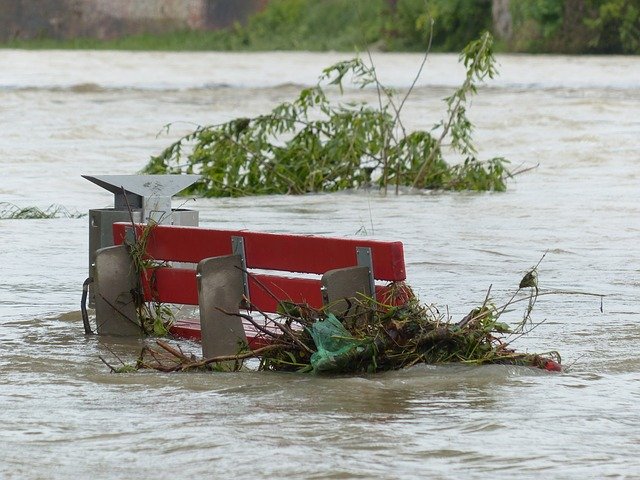Flood risk management
Contents |
[edit] Introduction
The National planning policy framework (NPPF) considers flood risk to be the combination of the probability and the potential consequences of flooding from all sources, including:
- Rivers and the sea.
- Rainfall.
- Rising groundwater.
- Overwhelmed sewers and drainage systems.
- Reservoirs, canals and lakes.
- Other artificial sources.
For more information, see National planning policy framework NPPF.
Flood risk management can be loosely defined as the analysis, understanding and appropriate actions based on a flood risk assessment that examines the connection between the sources mentioned in the NPPF as well as physical systems and other environmental conditions.
Actions that address the risks posed by flooding may include:
- Flood defence systems.
- Warning and informing systems.
- Relocation of people in high risk areas.
- Spatial planning.
- Floodplain mapping.
Through these activities, flood risk management can help reduce the risk from flooding for those people located in flood zones.
[edit] The Flood and Water Management Act 2010
The Flood and Water Management Act was introduced on 8 April 2010 to implement Sir Michael Pitt’s recommendations following the widespread flooding of 2007 when more than 55,000 homes and businesses were flooded (see Pitt Review).
The Act required better management of flood risk, created safeguards against rises in surface water drainage charges and protected water supplies for consumers. It also gave a new responsibility to the Environment Agency for developing a National Flood and Coastal Risk Management Strategy.
For more information, see Flood and Water Management Act.
[edit] Flood and coastal erosion risk management FCERM
In 2020, the Environment Agency acknowledged the connection between floods and coastal erosion. Its National Flood and Coastal Erosion Risk Management (FCERM) strategy for England defined FCERM as managing the risks of flooding and coastal erosion to people, property and the natural environment through minimising, predicting and managing the risk.
The strategy sought to identify better methods of understanding and managing the risks and consequences of flooding from:
- Rivers.
- The sea.
- Groundwater.
- Reservoirs.
- Ordinary watercourses.
- Surface water.
- Sewers.
- Coastal erosion.
It also instructed Risk Management Authorities (RMAs) involved in FCERM to exercise their plans and activities consistently with the strategy.
For more information, see Risk management authority RMA.
[edit] Related articles on Designing Buildings
- Adaptive pathways.
- Coast protection authorities.
- Coastal groups.
- Drainage and sewerage management plans DSMPs.
- Flood and Water Management Act.
- Flood risk management plans.
- Flood Risk Management (Scotland) Act 2009.
- Habitat Compensation Programme HCP.
- Long-term investment scenarios LTIS.
- National planning policy framework NPPF.
- Outline planning application.
- Risk management authority RMA.
- Shoreline management plans SMPs.
[edit] External resources
Featured articles and news
RTPI leader to become new CIOB Chief Executive Officer
Dr Victoria Hills MRTPI, FICE to take over after Caroline Gumble’s departure.
Social and affordable housing, a long term plan for delivery
The “Delivering a Decade of Renewal for Social and Affordable Housing” strategy sets out future path.
A change to adoptive architecture
Effects of global weather warming on architectural detailing, material choice and human interaction.
The proposed publicly owned and backed subsidiary of Homes England, to facilitate new homes.
How big is the problem and what can we do to mitigate the effects?
Overheating guidance and tools for building designers
A number of cool guides to help with the heat.
The UK's Modern Industrial Strategy: A 10 year plan
Previous consultation criticism, current key elements and general support with some persisting reservations.
Building Safety Regulator reforms
New roles, new staff and a new fast track service pave the way for a single construction regulator.
Architectural Technologist CPDs and Communications
CIAT CPD… and how you can do it!
Cooling centres and cool spaces
Managing extreme heat in cities by directing the public to places for heat stress relief and water sources.
Winter gardens: A brief history and warm variations
Extending the season with glass in different forms and terms.
Restoring Great Yarmouth's Winter Gardens
Transforming one of the least sustainable constructions imaginable.
Construction Skills Mission Board launch sector drive
Newly formed government and industry collaboration set strategy for recruiting an additional 100,000 construction workers a year.
New Architects Code comes into effect in September 2025
ARB Architects Code of Conduct and Practice available with ongoing consultation regarding guidance.
Welsh Skills Body (Medr) launches ambitious plan
The new skills body brings together funding and regulation of tertiary education and research for the devolved nation.
Paul Gandy FCIOB announced as next CIOB President
Former Tilbury Douglas CEO takes helm.
UK Infrastructure: A 10 Year Strategy. In brief with reactions
With the National Infrastructure and Service Transformation Authority (NISTA).























